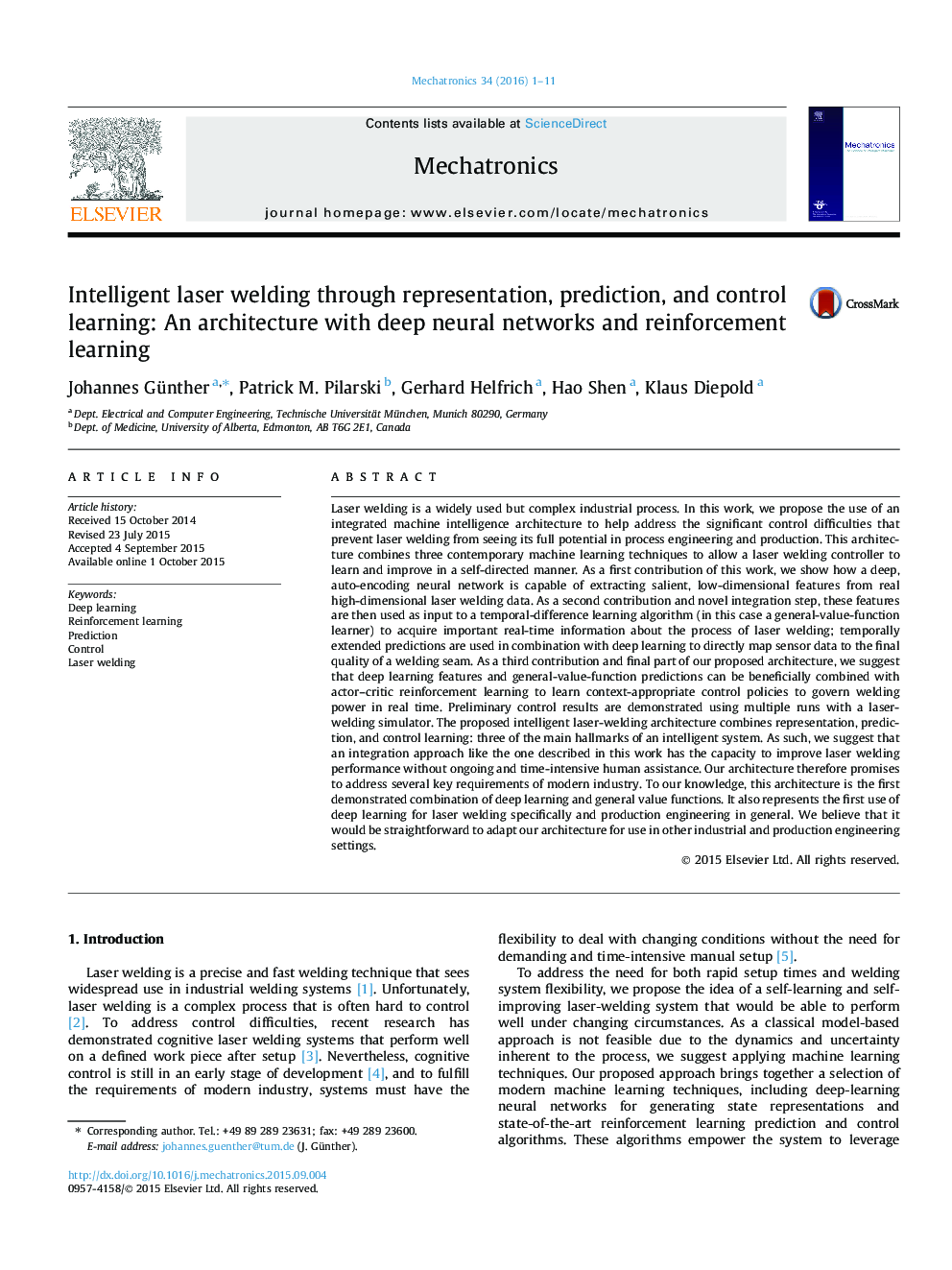| کد مقاله | کد نشریه | سال انتشار | مقاله انگلیسی | نسخه تمام متن |
|---|---|---|---|---|
| 732294 | 1461566 | 2016 | 11 صفحه PDF | دانلود رایگان |
• Key aspects of intelligence are combined to a cognitive control architecture.
• We use deep neural networks for feature extraction.
• Temporally extended predictions about missing information are made.
• We use features and predictions for an integrated control learner for laser welding.
• Results indicate transferability of the approach to other production processes.
Laser welding is a widely used but complex industrial process. In this work, we propose the use of an integrated machine intelligence architecture to help address the significant control difficulties that prevent laser welding from seeing its full potential in process engineering and production. This architecture combines three contemporary machine learning techniques to allow a laser welding controller to learn and improve in a self-directed manner. As a first contribution of this work, we show how a deep, auto-encoding neural network is capable of extracting salient, low-dimensional features from real high-dimensional laser welding data. As a second contribution and novel integration step, these features are then used as input to a temporal-difference learning algorithm (in this case a general-value-function learner) to acquire important real-time information about the process of laser welding; temporally extended predictions are used in combination with deep learning to directly map sensor data to the final quality of a welding seam. As a third contribution and final part of our proposed architecture, we suggest that deep learning features and general-value-function predictions can be beneficially combined with actor–critic reinforcement learning to learn context-appropriate control policies to govern welding power in real time. Preliminary control results are demonstrated using multiple runs with a laser-welding simulator. The proposed intelligent laser-welding architecture combines representation, prediction, and control learning: three of the main hallmarks of an intelligent system. As such, we suggest that an integration approach like the one described in this work has the capacity to improve laser welding performance without ongoing and time-intensive human assistance. Our architecture therefore promises to address several key requirements of modern industry. To our knowledge, this architecture is the first demonstrated combination of deep learning and general value functions. It also represents the first use of deep learning for laser welding specifically and production engineering in general. We believe that it would be straightforward to adapt our architecture for use in other industrial and production engineering settings.
Journal: Mechatronics - Volume 34, March 2016, Pages 1–11
